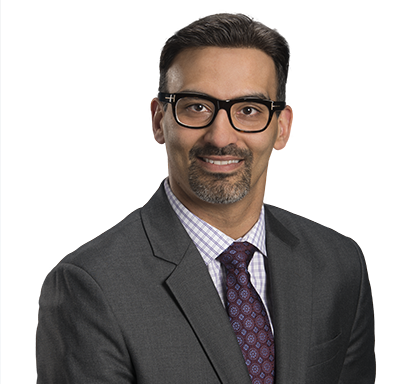When it comes to geographical area, Parkview Medical Center, a non-profit, independent community hospital with 260 acute-care beds, punches above its weight. It doesn’t have much of a choice.
“Our area extends from Pueblo, Colorado down to Raton, New Mexico, eastwards towards Kansas and westward into the [Rocky] Mountains,” says Sandeep Vijan, MD, Vice President of Medical Affairs and Quality and CMO of Parkview. The geography, he says, is sprinkled with several critical access hospitals that refer patients to Parkview, which is the region’s only certified and verified Level II Trauma Center
Moreover, Pueblo, its home base, used to have two hospitals, but the other facility downsized its inpatient work and has only 20 beds, putting it in line with critical access hospitals. “As a result, Parkview was positioned to absorb a lot more health care work than we were accustomed to doing. That created challenges because bed capacity is finite,” Vijan says.
Of course, bed capacity has never been more of an issue than it was during the past year thanks to the COVID-19 pandemic. Across the country, hospitals and health systems were dealing with capacity challenges in critical junctures during COVID surges. According to analysis from Yale of 306 hospital referring regions (HRRs) in the U.S. from March 1 to July 26, 2020, geographic regions with fewer resources per COVID-19 patient — including ICU beds, intensivists or critical care physicians, emergency physicians, nurses, and general hospital beds — were statistically associated with more deaths.
“COVID is a very different disease. Hospitals aren’t just faced with an increasing volume of patients that require care, but those who come in with COVID and need to be hospitalized often spend up to three weeks with us,” says Vijan.
Reducing length of stay
What helped Parkview tackle this challenge is that even before COVID hit, the hospital was putting resources into reducing length of stay. The organization invested in a third-party software application from Pieces Technologies to integrate into its Meditech EHR (it has since decided to switch EHRs to Epic). The app uses natural language processing, predictive modeling, machine learning technology to garner insights from the EHR, structured or unstructured, that helps providers identify discharge barriers throughout the patient’s stay.

“Most payers and regulatory bodies are asking us to get more efficient in health care delivery. There is plenty of reason to go down this path.” Sandeep Vijan, MD, Vice President of Medical Affairs and Quality and CMO of Parkview
“We have been able to reduce length of stay from 5.1 days to around 4.5 days. That has allowed us, on a monthly basis, to open up our hospital to 60 more patients,” says Vijan. Although he notes that COVID has bumped it back up to 4.71, which isn’t as bad as it used to be but still represents a challenge. “It’s tough out there to maintain that level of throughput with a disease that behaves very differently like COVID.”
The AI-driven software can identify a patient’s social determinants of health, chronic disease burdens and other pertinent information that gets the wheels in motion for the care team, particularly nurses and care managers. Each unit of the care team has a reducing length of stay checklist.
For example, if a patient has COPD, it gets them thinking about any respiratory support they might need in the home. Often, the issues that are preventing discharge may be less apparent to the semi-clinical support team, Vijan notes.
“What the natural language processing has done has brought these types of things to the forefront. During multidisciplinary rounds, we use this information and are able to affect clinical workflows on hospital day one and day two rather than on days three, four and five where these issues might become more apparent,” he says.
Challenges and opportunities
Of course, implementing this technology hasn’t come without its challenges. Parkview had to build out workflows that would ensure the technology would be used effectively. They also had to make sure provider stakeholders were on board with the changes.
In this regard, Parkview had to train doctors, nurses, case managers on their individual roles through practice sessions, roleplaying and model patients. Parkview leveraged data that was coming out of the AI solution to identify frequent barriers that would have to be addressed. Using this data, the system rolled out an initiative to discharge patients before noon, which would reportedly increase maximum patient flow.
“We’ve built clinical workflows as the data has identified the opportunity. Each of them has taken time. This is a never-ending project. We are always going to find opportunities. We’ve tackled the low-lying fruit with clinical indicators, priorities and getting people rowing in the same direction with the patient. There are other things that are much more difficult to tackle, which are systems-based problems,” Vijan says.
Down the line, one area that Vijan has in his sights for usage of the AI software is the awareness of early warning signs of clinical deterioration. Subtle changes in lab work and documentation can indicate when a patient is deteriorating, and he would like to create a warning signs workflow to respond to these issues before they happen.
In terms of return on investment, Vijan says Parkview was able to attach a tangible metric to the project. In this case, decreasing length of stay meant the hospital could admit more patients and increase revenue. He says as health care executives weigh the risks, benefits, and cost components of a project like this, they need to understand the ROI and ensure it has a tangible payout, as well as an intangible payout with better outcomes.
“Most payers and regulatory bodies are asking us to get more efficient in health care delivery. There is plenty of reason to go down this path,” Vijan says, adding two pieces of advice for health care executives. “As you explore AI and big data for process improvement, understand that there are two things that will underpin your success. Number one is the recognition that these systems are centered around the patient. Number two is that there are people who have to operationalize workflow to make it better. Be clear on the mission and what you want to accomplish and look at the foundations of change management to make this happen.”
Homepage image: Unsplash/Kait Herzog











